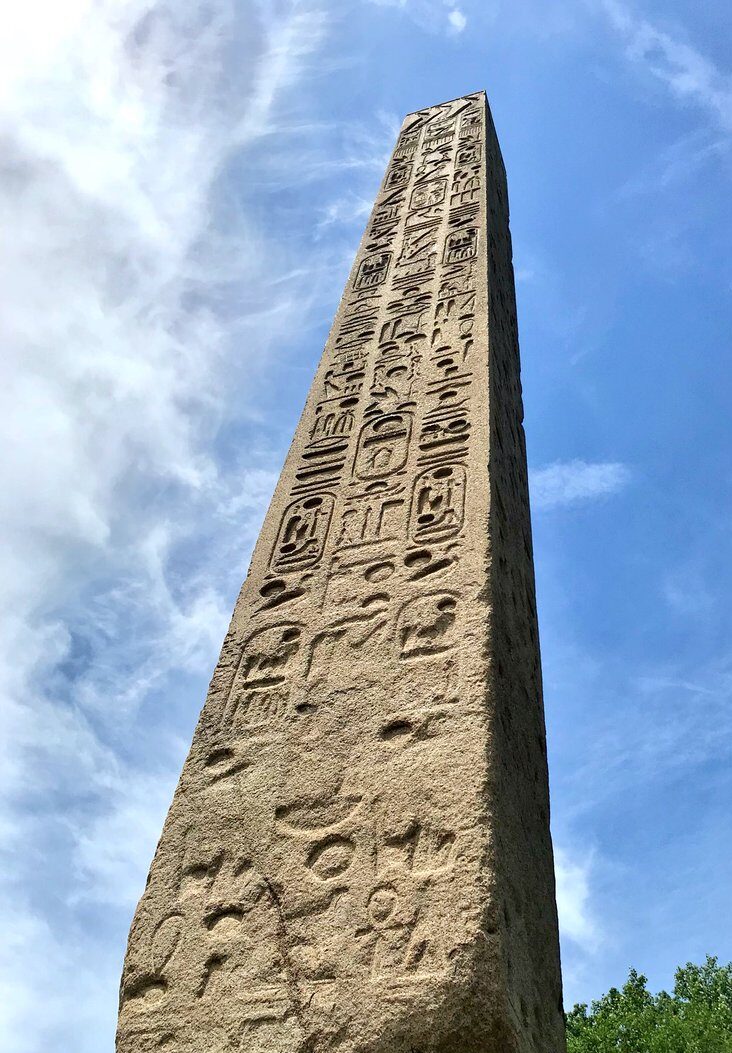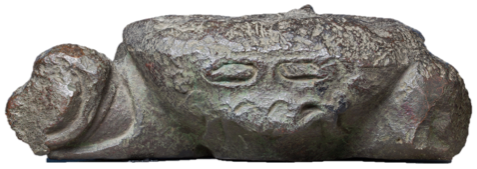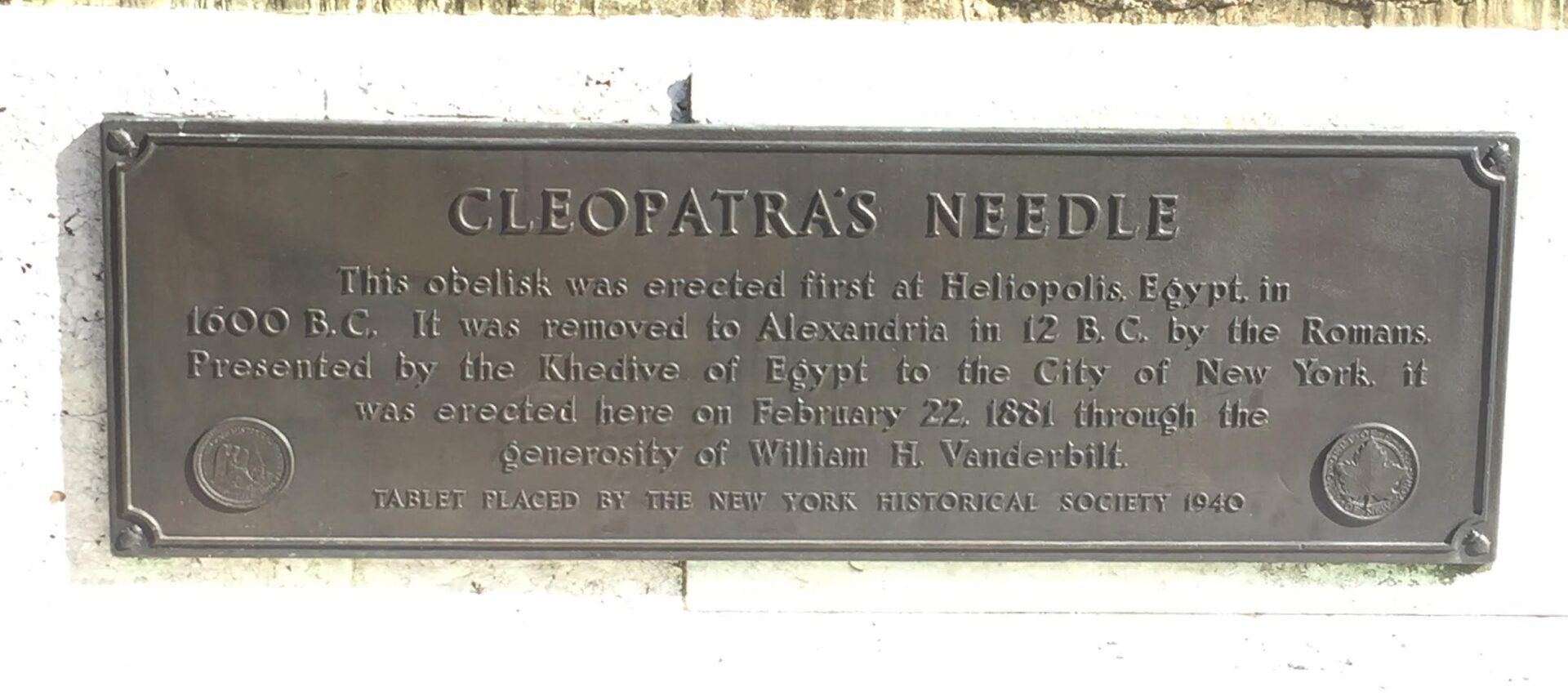Why does Central Park feature an ancient Egyptian obelisk?
On the Eastern edge of Central Park, flanking the Metropolitan Museum of Art, stands the ancient Egyptian obelisk known anachronistically as ‘Cleopatra’s Needle.’ Erected in Central Park on Jan 22, 1881 as a diplomatic gift from Egypt to the US, the obelisk is today the oldest outdoor monument of New York City. The obelisk is part of a dyad originally erected in Heliopolis by Thutmose III during the New Kingdom. The hieroglyphic inscriptions on its surface indicate that two centuries later the obelisk was appropriated by Ramessess II to commemorate his military victories. During the Augustan imperial rule of Egypt, the obelisk was transferred to Alexandria and placed in front of the Caesareum. The obelisk was eventually transported and erected in Central Park, New York city. The curious and invaluable characteristic of this obelisk is that each physical section corresponds to a different historical phase. Its multifaceted material reality is testimony to a consistent transference of power across time. Through its inscriptions, its iconography, and its mobile history, the Central Park Obelisk exemplifies the role that obelisks played in ancient and modern history as symbols of transient power.
Scholars have called ‘Cleopatra’s Needle’ the obelisk of great conquerors, as its history is intertwined with that of Thutmose III and Ramessess II, pharaohs famous for their imperialistic ventures, and the Roman conquest of Egypt. As a diplomatic gift in modern times, the obelisk is also to be inserted into the convoluted power dynamics of 19th century European colonialism. This website invites you to engage in depth with the history and significance of this obelisk as an ancient artifact, a modern public monument and a symbol of power across time. Together we will explore archaeological evidence and documents that trace the obelisk’s journey from the ancient city of Heliopolis, through the famous ancient metropolis of Alexandria, and finally to New York City, modern portal to the world.
Interact with the image below to see the different historical phases of obelisk!

Phase I. Heliopolis

The oldest section of standing monument, this is the original obelisk first erected by Thutmose III in 1475 BCE in Heliopolis. The inscriptions were later added by Ramessess II to commemorate his military victories.
Phase II. Alexandria

Here highlighted are four small bronze crabs. Casted in the 1880s upon the erection of the obelisk in Central Park, these crabs were to replace the original four bronze crabs that were placed by the Roman Prefect of Egypt Barbarus when moving the obelisk from Heliopolis to Alexandria. The modern crabs are made in the image of the ancient ones and serve the same cryptic structural function to uphold the uprooted obelisk. Of the four original crabs only two survived and are today located in Gallery 131 of the Egyptian Wing at the Metropolitan Museum of Art.
Click here to learn more about the fate of the obelisk during the Roman Empire.
Click here to learn more about the crabs and their enigmatic symbology.
Phase III. NYC
This granite base was instituted upon the erection of the obelisk in Central Park in 1882. This section is representative of the history of the obelisk as a public monument in Central Park in the late 19th and early 20th c. This history is to contextualize within the rising Egyptomania that was pervading the architectural and landscaping tradition in both the U.S. and Europe, with the parallel cases of the 'Cleopatra's Needles' of London and Paris.
Phase IV. Today

This specific section encompassing the railing and informational plaque refer to the contemporary history of the obelisk. The fading plaque and outdated interpretative tools available are challenging the modern relevance of the obelisk.
A Symbol of Timeless Power and Mobility
Obelisks are symbols of power and the significance of their mobility and monumentality is still traceable to modern days. In the case of the Central Park Obelisk, its history sheds light on the importance of the mobile nature of obelisks in both the ancient and modern world. As it applies to the ancient world, the symbolism of the Roman crabs encapsulates the audacious political insolence of the Roman Empire in face of symbols of pharaonic rule. In the modern world, the mobile nature of obelisks comes to exemplify the colonial commodification and fetishization of ancient artifacts, as well as of ancient Egyptian culture itself. The geo-political circumstances that led the Khedive to gift the obelisk to the U.S. and the decision to place the obelisk in Central park must in fact be contextualized within the rising Egyptomania of the 19th and 20th century and the role that such a trend played in the shaping of monumentality in public spaces in New York City and other North American and European cities. The Central Park obelisk was, in fact, transported simultaneously to other two obelisks of Thutmose III, respectively destined to London and Paris. In light of the timeless mobile nature of obelisks, what is the meaning and political significance of erecting Egyptian obelisks in these three cities, specifically in reference to the growing role that NYC was assuming as portal to the world?
